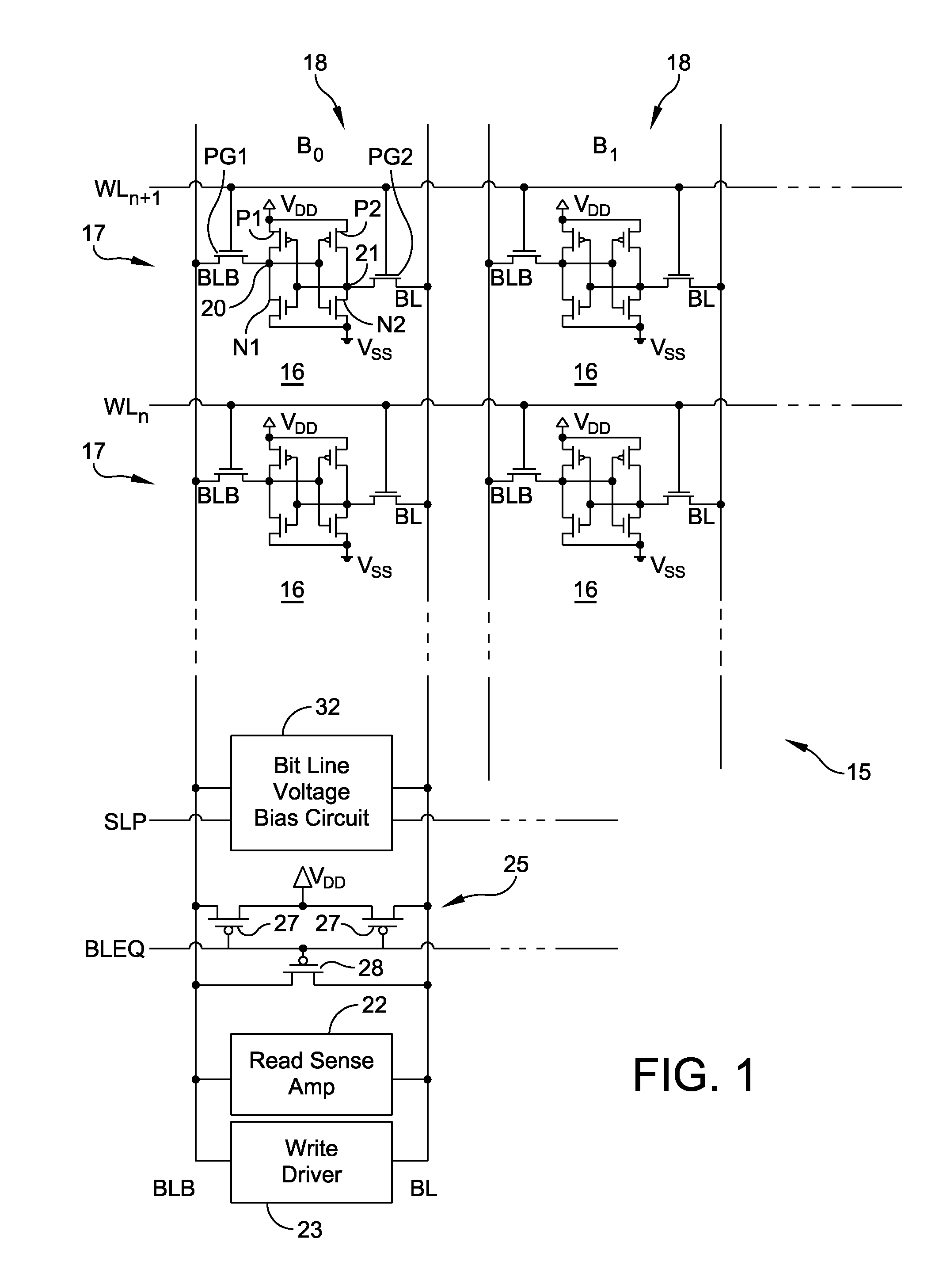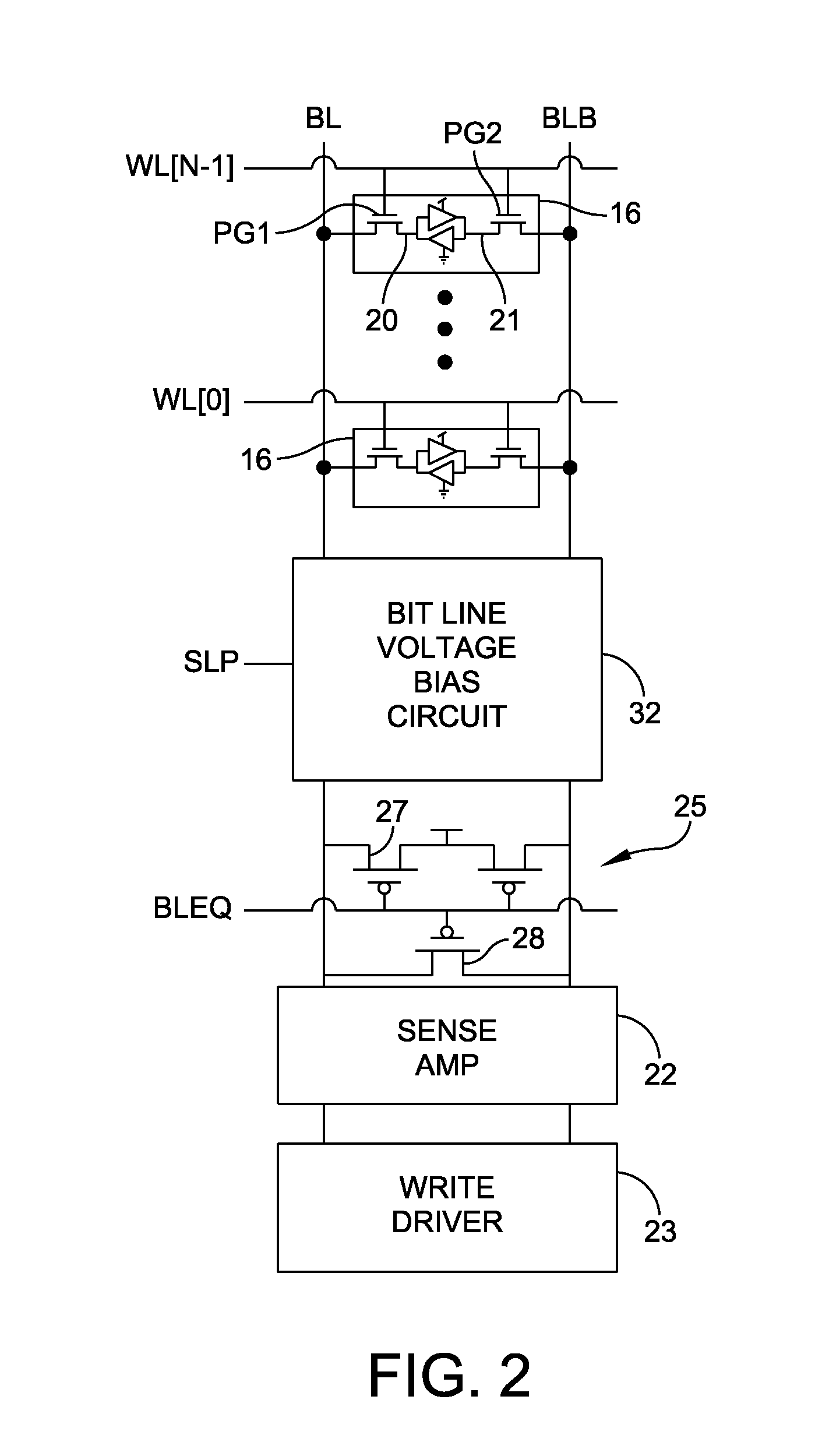Bit line voltage bias for low power memory design
a low-power memory and bit line voltage bias technology, applied in static storage, information storage, digital storage, etc., can solve the problems of consuming power, affecting the maximum operational speed, so as to reduce the current inrush
- Summary
- Abstract
- Description
- Claims
- Application Information
AI Technical Summary
Benefits of technology
Problems solved by technology
Method used
Image
Examples
Embodiment Construction
[0027]In FIG. 1, a six-transistor (6T) bit cell in a CMOS SRAM (complementary metal oxide semiconductor static random access memory) 15 is shown as an example of an integrated circuit memory device that stores one bit per bit cell 16. Numerous bit cells are provided in a memory array shown with rows or words 17 and columns or bit positions 18 in the words. A row 17 of bit cells 16 is selected by activating a word line signal WL for that row. The logic levels of the bit cells 16 in the row 17 are loaded (written) or sensed (read) by signals on bit lines BL and BLB that cross the word line at each selected bit cell position in the array.
[0028]The cells 16 have four transistors forming two cross coupled inverters, each inverter having a PMOS transistor and an NMOS transistor coupled to one another at a node, and the inverter connected between positive and negative power supplies VDD, Vss. The cell nodes 20, 21 are isolated from the complementary bit lines BL and BLB by passing gate swi...
PUM
 Login to View More
Login to View More Abstract
Description
Claims
Application Information
 Login to View More
Login to View More - R&D
- Intellectual Property
- Life Sciences
- Materials
- Tech Scout
- Unparalleled Data Quality
- Higher Quality Content
- 60% Fewer Hallucinations
Browse by: Latest US Patents, China's latest patents, Technical Efficacy Thesaurus, Application Domain, Technology Topic, Popular Technical Reports.
© 2025 PatSnap. All rights reserved.Legal|Privacy policy|Modern Slavery Act Transparency Statement|Sitemap|About US| Contact US: help@patsnap.com



